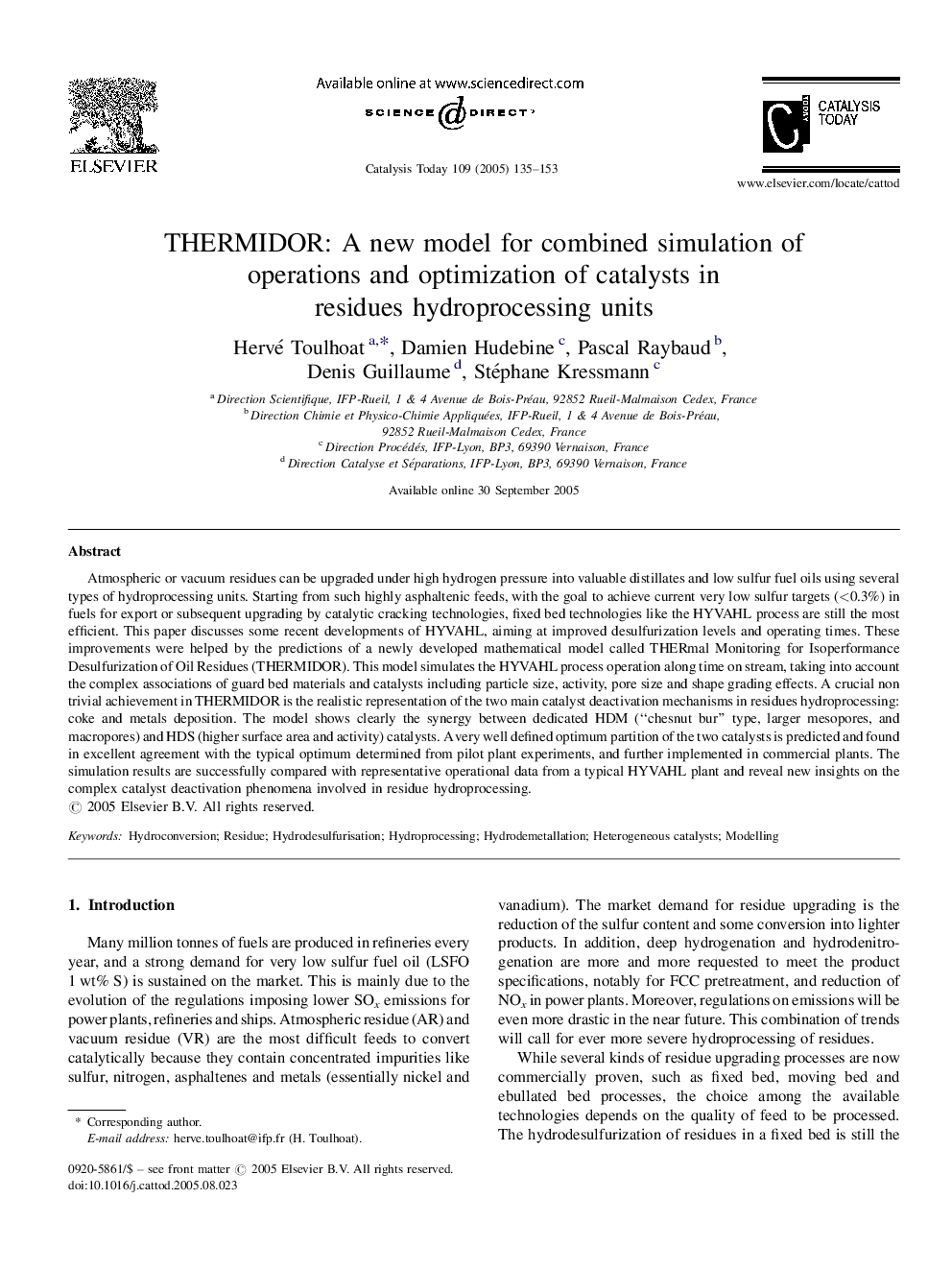| Article ID | Journal | Published Year | Pages | File Type |
|---|---|---|---|---|
| 9610148 | Catalysis Today | 2005 | 19 Pages |
Abstract
Atmospheric or vacuum residues can be upgraded under high hydrogen pressure into valuable distillates and low sulfur fuel oils using several types of hydroprocessing units. Starting from such highly asphaltenic feeds, with the goal to achieve current very low sulfur targets (<0.3%) in fuels for export or subsequent upgrading by catalytic cracking technologies, fixed bed technologies like the HYVAHL process are still the most efficient. This paper discusses some recent developments of HYVAHL, aiming at improved desulfurization levels and operating times. These improvements were helped by the predictions of a newly developed mathematical model called THERmal Monitoring for Isoperformance Desulfurization of Oil Residues (THERMIDOR). This model simulates the HYVAHL process operation along time on stream, taking into account the complex associations of guard bed materials and catalysts including particle size, activity, pore size and shape grading effects. A crucial non trivial achievement in THERMIDOR is the realistic representation of the two main catalyst deactivation mechanisms in residues hydroprocessing: coke and metals deposition. The model shows clearly the synergy between dedicated HDM (“chesnut bur” type, larger mesopores, and macropores) and HDS (higher surface area and activity) catalysts. A very well defined optimum partition of the two catalysts is predicted and found in excellent agreement with the typical optimum determined from pilot plant experiments, and further implemented in commercial plants. The simulation results are successfully compared with representative operational data from a typical HYVAHL plant and reveal new insights on the complex catalyst deactivation phenomena involved in residue hydroprocessing.
Keywords
Related Topics
Physical Sciences and Engineering
Chemical Engineering
Catalysis
Authors
Hervé Toulhoat, Damien Hudebine, Pascal Raybaud, Denis Guillaume, Stéphane Kressmann,
